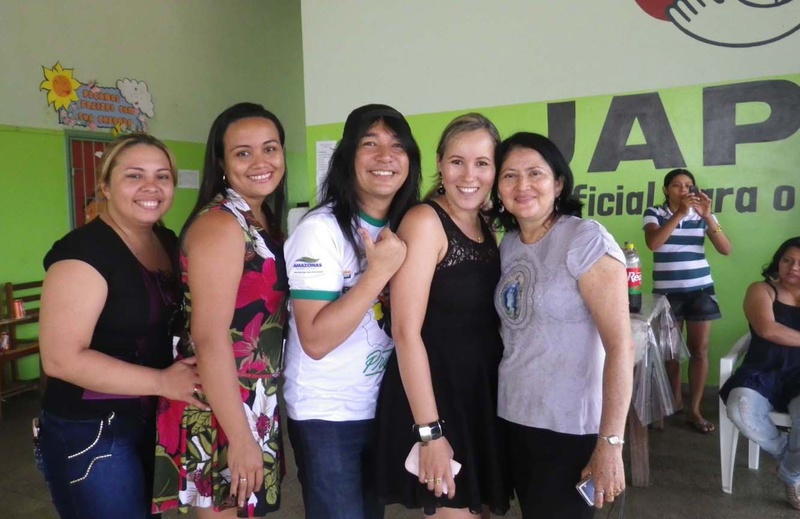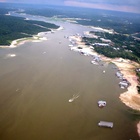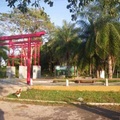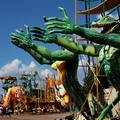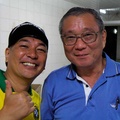One of my activities in Brazil with JICA was to make a round trip to Japanese language education institutions scattered throughout the western Amazon region. I helped out with Japanese organizations in each state capital, with a focus on Manaus in Amazonas State, Rio Branco in Acre State, Boa Vista in Roraima State, and Porto Velho in Rondônia State. In the places where JICA youth volunteers were dispatched, I taught classes together with them and planned events to promote Japanese culture. Parintins is not a state capital, but there is a Japanese organization there called the Parintins Japan-Brazil Association.
Japanese language education began in 2010, led by chairman Mario Taketomi. Japanese language classes are held at the Kimura Language Center, located in the center of the city. Japanese language classes for young children are held at Inomata Tadashi School (Principal Abeniuza Tokuta) on the outskirts of the city. There are deep historical reasons behind the long absence of Japanese language education in this town, which has had deep ties with Japan since before the war.
Most of the residents of this small jungle town have Indian roots, and while many of them have never left Parintins, some have worked in Japan as dekasegi. Since the 1980s, many Japanese people have come to Japan to support the Japanese economy, and the Japanese people in this town have been eager to take advantage of the opportunity.
There are many schools in the town with Japanese surnames and names, and at first glance it seems like there are many people who are pro-Japan, but apart from those returning from work, no one can speak Japanese and they have almost no knowledge about Japan. The only pure Japanese person living in the town today is Hisako Toguchi, the owner of the supermarket "Casa Sony."
Why are there Japanese people on such an isolated island? Who is the golden bust of "Uezuka Tsukasa" in the center of town? A big keyword emerges: "Koutakusei." Koutakusei means high school graduate.
In the 1930s, a big project was started to establish industry in the Amazon, on the other side of the world. It was a grand plan to develop the Amazon jungle. After studying agriculture for a year at the Japan Higher Colonization School (originally Kokushikan Higher Colonization School) in Japan, he traveled to the Amazon to develop the jungle as a leader in developing the Amazon. The principal of the school and the leader of the project was Tsukasa Uetsuka, who was a member of the House of Representatives at the time.
The first group of Takataku students came to the Amazon in June 1931 (Showa 6). They lived strong lives in the unfamiliar tropical climate, battling illnesses and bad habits, centered around the Amazon Industrial Research Institute, which was built in a corner of Parintins County called Villa Amazonia. Starting with the first group of 47 immigrants, by 1938, 401 people, including Takataku students and their families, had settled in the settlement run by the Amazon Industrial Research Institute.
They researched the cultivation of jute hemp in the fertile Amazon River wetlands. After much hard work, they succeeded in cultivating it. Jute hemp was used for coffee and rice bags, but at the time it was imported from India, so Takataku's mass production changed the Brazilian economy. Brazil was now able to export jute, which had previously been imported.
Later, this Amazonian industry project was confiscated by the Brazilian government when Brazil joined the Allied forces during World War II. However, the industries that the Japanese brought to this area developed smoothly and contributed greatly to improving the lives of the Amazonian people. The land and property confiscated during the war were never returned. The same was true for the Japanese language, and decades passed before Japanese language education, which was banned during the war, was resumed.
"Here's a photo from back then. And here's a map of their base, Villa Amazonia. There are plenty of other valuable documents as well. Now let's take a look at some old footage from when they first settled."
Mario, the president of the Japan-Brazil Association of Parintins, would excitedly speak to us JICA volunteers about how much of an impact Takataku had had on the local community and how much they had benefited from it.
© 2016 Toshimi Tsuruta


